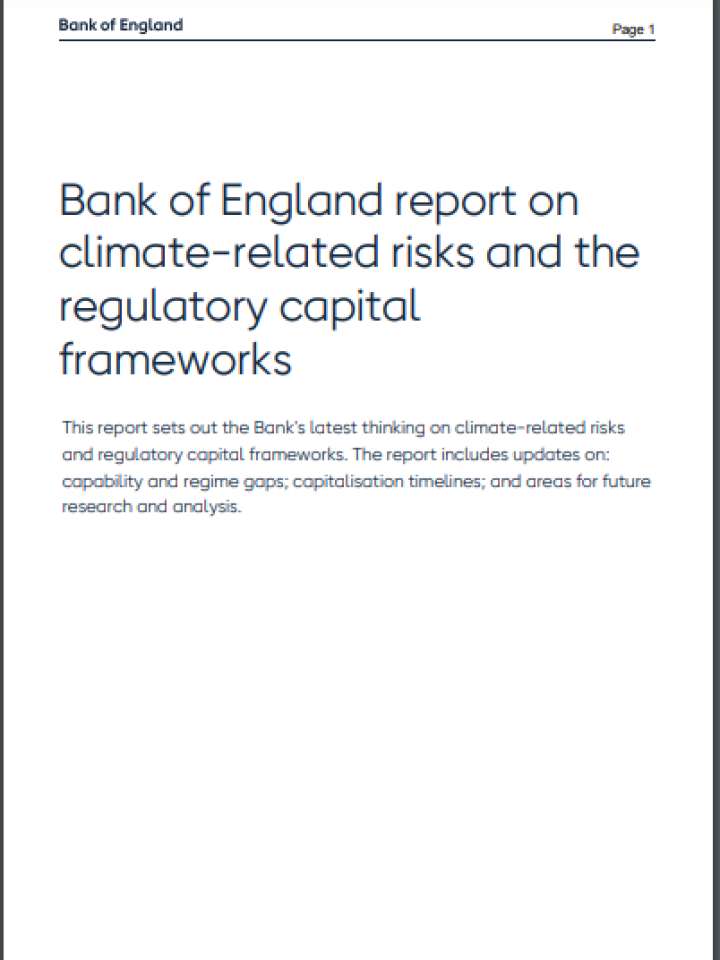Bank of England report on climate-related risks and the regulatory capital frameworks
This report sets out the Bank's latest thinking on climate-related risks and regulatory capital frameworks. The report includes updates on: capability and regime gaps; capitalisation timelines; and areas for future research and analysis.
Some of the key findings from the study include:
- Existing capability and regime gaps create uncertainty over whether banks and insurers are sufficiently capitalised for future climate-related losses. This uncertainty represents a risk appetite challenge for micro and macroprudential regulators. Regulators, including the Bank, need to form judgements on whether quantified and unquantified risks are within risk appetite – and act accordingly.
- Effective risk-management controls within PRA-regulated firms (firms) can reduce the quantum of capital required in the future for resilience, but the absence of controls might suggest a greater quantum of capital will be required. As a short-term priority, the Bank is focused on ensuring firms make progress to address ‘capability gaps’ to improve their identification, measurement, and management of climate risks.
- The Bank has explored conceptual issues to better understand the nature and materiality of ‘regime gaps’ in the capital framework. The unique characteristics of climate risks mean that their capture by capital frameworks requires a more forward-looking approach than used for many other risks. Scenario analysis and stress testing will play a key role in this. Regulators, including the Bank, need to focus on the development of these frameworks and how they can inform capital requirements. Firms will be expected to make further progress in this regard..
Explore further
